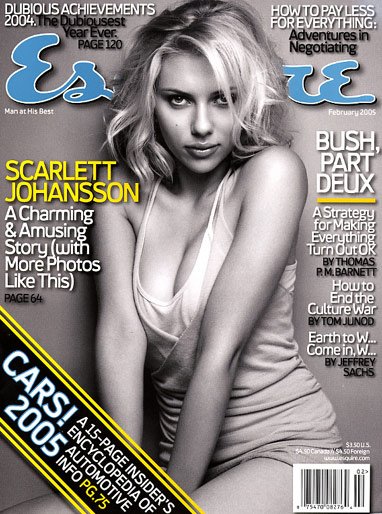Esquire appeared, for the first time, in October 1933. Founded and edited by David A. Smart, Henry L. Jackson (who was killed in the crash of United Airlines Flight 624) and Arnold Gingrich. It later transformed itself into a more refined periodical with an emphasis on men's fashion and contributions by Ernest Hemingway and F. Scott Fitzgerald. In the 1940s, the popularity of the Petty Girls and Vargas Girls provided a circulation boost. In the 1960s, Esquire helped pioneer the trend of New Journalism by publishing such writers as Norman Mailer, Tim O'Brien, John Sack, Gay Talese, Tom Wolfe and Terry Southern. Under Harold Hayes, who ran it from 1961 to 1973, it became as distinctive as its oversized pages. The magazine shrank to the conventional 8½x11 inches in 1971. The magazine was sold by the original owners to Clay Felker in 1977, who sold it to the 13-30 Corporation, a Tennessee publisher, two years later. During this time New York Woman magazine was launched as something of a spinoff version of Esquire aimed at female audience. 13-30 split up in 1986, and Esquire was sold to Hearst at the end of the year, with New York Woman going its separate way to American Express Publishing.
David Granger was named editor-in-chief of the magazine in June 1997. Since his arrival, the magazine has received numerous awards, including multiple National Magazine Awards — the industry’s highest honor. Prior to becoming editor-in-chief at Esquire, Granger was the executive editor at GQ for nearly six years. Current award winning staff writers include Tom Chiarella, Scott Raab, Mike Sager, Chris Jones, John H. Richardson, Cal Fussman, Lisa Taddeo and Tom Junod.
In October 2008, to commemorate the magazine’s 75th Anniversary, Esquire published a limited edition digital cover that featured electronic ink with moving words and flashing images. The electronic cover was used in only 100,000 copies that went to newsstands — its overall circulation is about 720,000. Esquire has exclusive use of E Ink’s technology for use in print through 2009.
The February 2009 issue cover contains a lift-the-flap advertisement in the middle of Barack Obama's face. The flap contains quotes from the issue and an ad for the Discovery Channel series One Way Out.
In 2009, Esquire launched an augmented reality issue, where actor Robert Downey Jr.'s avatar can be controlled using QR Code barcodes printed in the magazine.
Here 20 Hottest This Magazine's Covers



















find in Esquire, Facts, Top, Unique, Celebrities, Models, Hot, Sexy, Info,
David Granger was named editor-in-chief of the magazine in June 1997. Since his arrival, the magazine has received numerous awards, including multiple National Magazine Awards — the industry’s highest honor. Prior to becoming editor-in-chief at Esquire, Granger was the executive editor at GQ for nearly six years. Current award winning staff writers include Tom Chiarella, Scott Raab, Mike Sager, Chris Jones, John H. Richardson, Cal Fussman, Lisa Taddeo and Tom Junod.
In October 2008, to commemorate the magazine’s 75th Anniversary, Esquire published a limited edition digital cover that featured electronic ink with moving words and flashing images. The electronic cover was used in only 100,000 copies that went to newsstands — its overall circulation is about 720,000. Esquire has exclusive use of E Ink’s technology for use in print through 2009.
The February 2009 issue cover contains a lift-the-flap advertisement in the middle of Barack Obama's face. The flap contains quotes from the issue and an ad for the Discovery Channel series One Way Out.
In 2009, Esquire launched an augmented reality issue, where actor Robert Downey Jr.'s avatar can be controlled using QR Code barcodes printed in the magazine.
Here 20 Hottest This Magazine's Covers



















find in Esquire, Facts, Top, Unique, Celebrities, Models, Hot, Sexy, Info,
0 comments:
Post a Comment